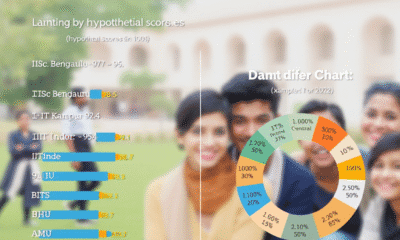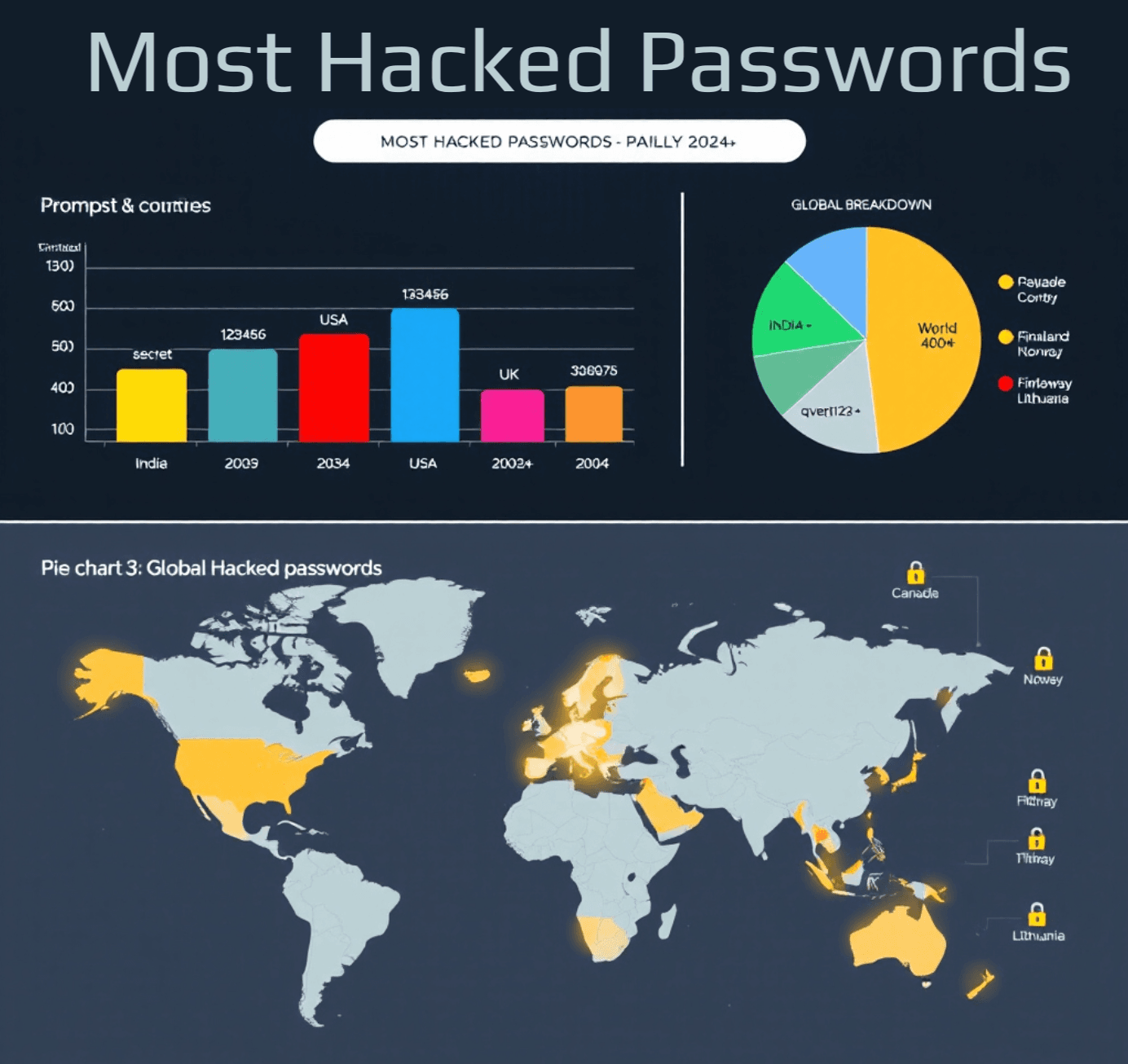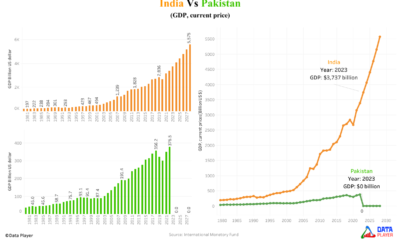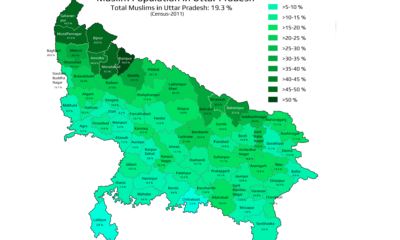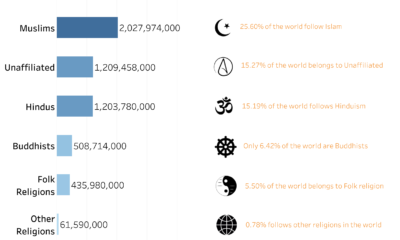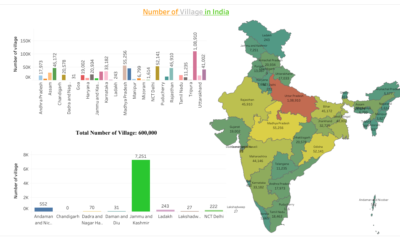Published
5 months agoon
Excerpt: The latest June 2025 web traffic rankings reveal a clear dominance by U.S.-based tech giants, with Google’s services leading the pack. This analysis delves into the top 50 most-visited websites, highlights sector trends—especially the rise of adult content platforms—and offers comprehensive data insights through tables and charts.
Global Leaders in Online Traffic
Google Search retains its crown as the world’s most-visited site, followed closely by YouTube and Facebook. U.S. companies occupy eight of the top ten slots, underscoring their global reach and infrastructure advantages.
- Search Engines: Google.com (1st), Bing.com (23rd), DuckDuckGo.com (43rd)[1]
- Social Media: Facebook.com (3rd), Instagram.com (4th), X.com/Twitter.com (6th)[2]
- Video Platforms: YouTube.com (2nd), Twitch.tv (29th), Bilibili.com (25th)
Top Most-Visited Websites (June 2025)
Sector Breakdown
Analyzing the full data set of the top 50 sites reveals distribution across categories. Notably, adult content sites have climbed into prominence, reflecting changing consumption patterns.
Rise of Adult Content Platforms
Adult websites now account for six of the top 50, including Pornhub (17th), XVideos (27th), xHamster (30th), XNXX (41st), Eporner (49th), and Stripchat (45th). These platforms collectively draw hundreds of millions of daily visits, fueled by mobile accessibility and global bandwidth improvements.
- Regional Insights: Europe and North America remain the largest audiences, but Asia-Pacific shows the fastest growth.
- Regulatory Impact: Varying national regulations affect rankings; for instance, China’s restrictions elevate domestic sites like Bilibili (25th).
Complete Data Sets and Methodology
Our analysis leverages the complete data sets provided by Similarweb and Semrush for June 2025. Metrics include unique visitors, engagement time, and traffic sources. Combining both platforms ensures accuracy and cross-validation.
Regional Variations and Growth Prospects
Outside the U.S., Japan’s Yahoo.co.jp (10th) and China’s ByteDance-owned TikTok.com (13th) demonstrate regional dominance. Emerging markets in Latin America and Africa are increasingly represented by news portals (e.g., Globo.com at 37th) and e‑commerce (eBay.com at 47th).
- Latin America: MercadoLibre’s influence is rising, though not yet in the top 50.
- Africa: Upticks in local news and messaging apps signal future entries.
Key Takeaways
- U.S. Tech Supremacy: American companies maintain a stronghold on global web traffic.
- Adult Content Emergence: Six adult sites in the top 50 reflect shifting consumer behaviors and improved accessibility.
- Diverse Growth: News, marketplace, and software categories continue expanding regionally.
As internet usage evolves, these rankings will adjust, highlighting the importance of continuous monitoring of complete data sets for market insights and strategic decision-making.
References
- Similarweb.com. (2025). June 2025 Global Ranking. Available at: https://similarweb.com/global-june2025 [Accessed 24 Jul. 2025].
- Semrush.com. (2025). Website Analytics Report June 2025. Available at: https://semrush.com/reports/june2025 [Accessed 25 Jul. 2025].
You may like
Technology
These Are the 20 Most Hacked Passwords of 2024 – Are You Using One?
Published
5 months agoon
July 27, 2025Excerpt: Despite ongoing warnings about password hygiene, the latest NordPass analysis reveals that users persistently opt for shockingly weak credentials. Our deep dive into the Top 20 most common passwords uncovers alarming patterns and underscores the urgent need for stronger, individualized security measures.
Overview of the Top 20 Passwords
The NordPass dataset highlights which passwords are most prevalent globally, revealing that all 20 entries can be cracked in under one second. The concentration of simple numeric sequences dominates the list, reflecting a troubling reliance on easily guessable strings [3]
Top 20 Most Common Passwords (2025) – Time to Crack & Estimated Count
Key Insights from the Data
- Uniformly Fast Crack Times: Every password in the list takes less than one second to breach using standard brute-force tools.
- Numeric Dominance: Half of the top 20 are strictly number-based, underscoring the false sense of security users place in simple digit strings.
- Minimal Variations: Common patterns like “qwerty” and repeated digits appear repeatedly, showing a lack of creativity in user-generated passwords.
- Complete Data Sets: The NordPass report provides full visibility into all 20 passwords, enabling comprehensive analysis and targeted user education.
- Facts: About 78% of the most common passwords globally (including those in the US list) can be cracked in under 1 second.
Distribution of Password Popularity
Examining the estimated counts across the top 10 entries illustrates how a handful of passwords account for the majority of exposures. The following bar chart depicts the gradient from the most to the least common within this subset [4]
Categorical Breakdown of Password Types
To better understand user behavior, passwords can be grouped by composition. The chart below shows the proportion of numeric-only, alphabetic, keyboard-pattern, and mixed/phrase entries among the top 20.
Regional and Security Implications
While NordPass’s global dataset provides a broad overview, regional analyses often mirror these trends, with the majority of users favoring brevity and familiarity over complexity. Cybersecurity experts warn that such predictable selections dramatically increase vulnerability to credential-stuffing attacks, particularly as automated tools improve in speed and sophistication.
- Awareness Campaigns: Educating users on the dangers of reuse and encouraging passphrases can mitigate risk.
- Multi-Factor Authentication: Implementing additional verification steps adds a critical layer of defense.
- Password Managers: Leveraging tools that generate and store unique passwords reduces human error.
A strong password is your first line of defense against hackers. According to NordPass’s 2024 report, millions of people still use weak passwords like “123456”, “password”, and “123456789”—all of which can be cracked in less than one second using automated tools. Shockingly, over 3 million accounts used “123456” alone. These passwords offer no real protection and are often the first combinations tested in cyberattacks.
NordPass Most Common Passwords by Country (2024)
- United States: The most common password is secret, used by over 328,000 people. While unique compared to global trends, it remains easily crackable in under 1 second.
- India: 123456 is the top choice with 363,000+ estimated uses. Its simplicity makes it highly vulnerable, cracked instantly despite India’s large digital population.
- United Kingdom: qwerty123 dominates with ~300,000 estimated uses. Though slightly more complex than 123456, it is still cracked in less than 1 second.
- Canada, Netherlands, Finland, Norway, and Lithuania also share qwerty123 as the top password, with combined usage exceeding 1.25 million. This cross-country trend suggests a regional reliance on keyboard-patterned passwords.
- Spain, Italy, Brazil, Argentina, Mexico, South Africa, and New Zealand all have 123456 as the most used password, with combined usage exceeding 1.9 million. This reflects a global reliance on ultra-simple numeric patterns.
- Germany’s top password passwort (the German word for “password”) is used by ~275,000 users, reflecting a language-based but still weak approach.
- France favors doudou (a term of endearment), indicating cultural personalization, but it’s still cracked instantly.
- Russia’s 1q2w3e and Poland’s zaq12wsx show regional keyboard patterns that offer marginal complexity but remain insecure.
- Ukraine stands out with PovlmLy727, appearing complex but still crackable instantly—likely due to predictable structure.
- Greece uses 212121 (repeating numbers), and Hungary uses long numeric strings like 63245009, both offering no real strength.
- Latvia, Estonia, and Denmark show attempts at mixing words and numbers (911yana777, D1lakiss, webhompass), though none survive even 1 second of cracking attempts.
- Iceland’s kassi (a common word) and Croatia’s dinamo (sports-related) reflect local vocabulary trends, but both lack complexity.
- Philippines has admin as its top password, a known default login credential—an alarming sign for personal and organizational security.
- Australia continues to use password, one of the oldest and weakest choices in password history, used by ~280,000 people.
- Over 90% of the top 200 passwords used in each country can be cracked in less than 1 second, showing widespread reliance on weak credentials.
- The United States has the longest maximum crack time at approximately 2 hours 20 minutes, with complex examples like P@ssw0rd!2023.
- The United Kingdom and Canada follow with maximum crack times exceeding 1 hour, indicating slightly stronger password habits.
- India’s longest crack time among its top 200 passwords is around 20 minutes, with examples like india@2023 and bharat#123. However, most Indian users still rely on simple numeric strings like 123456.
- Countries with the shortest maximum crack times include Croatia and the Philippines, where even the strongest common passwords are cracked in just 5 minutes.
- Stronger passwords typically include a mix of uppercase and lowercase letters, numbers, and special characters.
- Despite the presence of stronger passwords, the vast majority of users globally continue to use extremely weak ones, making accounts highly vulnerable.
- There is an urgent global need for better password practices, adoption of password managers, and the use of multi-factor authentication (MFA).
- Similarweb.com. (2025). June 2025 Global Ranking. Available at: https://similarweb.com/global-june2025 [Accessed 24 Jul. 2025].
- Semrush.com. (2025). Website Analytics Report June 2025. Available at: https://semrush.com/reports/june2025 [Accessed 25 Jul. 2025].
- NordPass.com. (2025). Top 20 Most Common Passwords. [online] Available at: https://nordpass.com/most-common-passwords/ [Accessed 21 Jul. 2025].
- TechRepublic.com. (2025). How Fast Hackers Crack Your Passwords. [online] Available at: https://www.techrepublic.com/article/password-cracking-speeds/ [Accessed 23 Jul. 2025].
Countries & Maximum Crack Time Observed in Their Top 200 Passwords (NordPass 2024)
How to protect your password from hackers
To protect yourself, use a password that is at least 12 characters long, with a mix of uppercase and lowercase letters, numbers, and special symbols. For example, a password like “T!mberWolf_92@Safe” would take over 1 trillion years to crack using current brute-force methods. Even better, use a passphrase—a string of unrelated words and symbols like “Sun$Track_Lion94”—which is easier to remember and harder to guess.
Also, always enable two-factor authentication (2FA) to add another layer of security. Never reuse passwords across accounts. Instead, use a password manager to create and store unique, complex passwords for each site.In summary, by avoiding predictable passwords and following simple best practices, you can make your password virtually uncrackable—even by the most advanced hackers.
Conclusion
The persistence of easily compromised passwords in NordPass’s complete data set highlights an ongoing challenge for both individuals and organizations. Adopting robust password policies, combined with user-friendly security tools, is essential to counteract the allure of convenience-based but dangerously weak credentials.
References
Technology
The Brains Behind AI: A Look at the World’s Top Supercomputers
Published
5 months agoon
July 24, 2025The Brains Behind AI: A Look at the World’s Top Supercomputers
AI is changing the world quickly! Powerful computers called supercomputers are needed to train the AI models that power things like chatbots and self-driving cars. Let’s see which supercomputers are the most powerful right now.
| Rank | Name | Company | H100 Equivalents |
|---|---|---|---|
| 1 | Colossus Memphis Phase 2 | xAI | 200,000 |
| 2 | Meta 100k | Meta AI | 100,000 |
| 3 | OpenAI/Microsoft Goodyear Arizona | Microsoft/OpenAI | 100000 |
| 4 | xAI Colossus Memphis Phase 1 | xAI | 100000 |
| 5 | Oracle OCI Supercluster H200s | Oracle | 65536 |
xAI’s Colossus Memphis Phase 2 is the champ! It has 200,000 special computer chips called H100 equivalents. This means it’s really, really fast! It can train a big AI model in just a short time. Other companies are building powerful supercomputers too, but some big players like Google and Amazon aren’t sharing as much information about their supercomputers.
Technology
Highest number of software developers by country in the world 2023 by GitHub | Data Player
Published
2 years agoon
February 11, 2024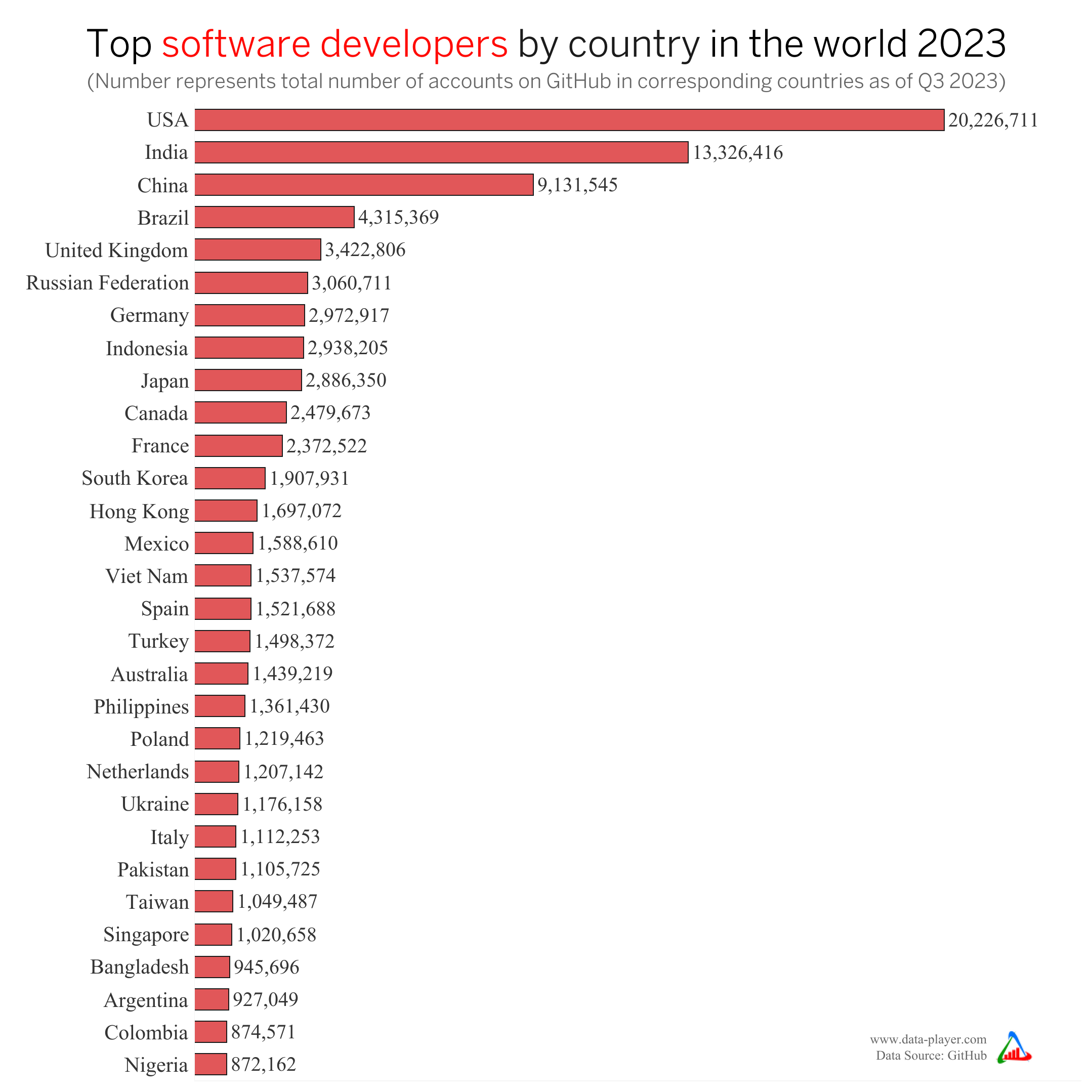
Interesting Facts
- GitHub, has published new data about number of developers around the world.
- The United States of America, India, and China have the largest number of developers.
- Saint Pierre and Miquelon, Cook Islands and The Holy See are the three countries that have least number of developers with 140, 142 and 157 respectively.
Overview on GitHub
GitHub (a repository) is a cloud based service, a leading platform for developers, providing a wide range of tools and services. It allows developers to easily create, store, manage, and share their code with others. This platform fosters collaboration and productivity among developers, driving innovation in the field of computer science and beyond. In essence, GitHub simplifies the process of using Git for version control and collaboration, making it more accessible and efficient for both individuals and teams. GitHub’s user-friendly interface extends its utility beyond software development, with some individuals leveraging it to manage various projects, such as writing books. GitHub’s free signup option allows anyone to host a public code repository, making it particularly attractive for open-source projects and fostering a vibrant community of collaboration and innovation[3].
In this article, our focus will be on the global usage of GitHub among developers in their day-to-day activities. We’ll delve into the statistics and trends regarding the number of developers from different countries who rely on GitHub for writing, sharing, and storing their code. Additionally, we’ll explore how developers leverage GitHub to build and enhance their professional profiles, ultimately enhancing their prospects in the job market. By examining the geographical distribution of GitHub users and their usage patterns, we aim to provide insights into its role as a fundamental tool in the careers of developers worldwide.
Developers around the world
Based on above GitHub’s data, the worldwide developer community has exceeded 125 million members in 2023. Notably, the United States, India, and China constitute more than 39.12% of this total. This statistic underscores the substantial presence of software developers in these countries, reflecting their pivotal role in shaping the global technology ecosystem.
The number of developers worldwide has risen significantly, from over 105 million in 2022 to now exceeding 125 million in 2023. This growth suggests a steady increase in people joining the developer community. Additionally, there’s a growing popularity of programming languages like JavaScript, Python, Java, R, C/C++, C#, etc. This indicates a wider interest in software development and highlights the diverse range of tools developers use to create programs and applications.
Developers create their profiles on GitHub, where they showcase their coding projects and contributions. They often include their GitHub profile links on their resumes to demonstrate their skills to potential employers. This practice highlights the growing importance of technology in today’s job market, as more developers seek to showcase their abilities and stay connected with the global developer community.
India is known for producing a large number of skilled software engineers who are well-trained in various technologies and programming languages. These engineers are highly sought after by companies worldwide and play a significant role in advancing technology globally. Their expertise helps boost the technology sector in different countries, making a valuable contribution to innovation and development[4]. Next in line are China, Brazil, the United Kingdom, and Russia, each boasting substantial numbers of software developers. Specifically, they have 9.1+ million, 4.3+ million, 3.4+ million, and 3+ million software developers, respectively. It’s no surprise that the USA tops the charts on GitHub for having the largest number of developers worldwide. This is largely due to the fact that many major tech companies are headquartered in the USA, attracting a large pool of talented developers to the country.
Data Source + –
Tools + –
- Jupyter Notebook: It is used to structure the data frame to look like above table. We have used pandas as a library in jupyter notebook where it uses python programming for data wrangling.
- Tableau: For visualization purposes, Tableau was utilized to create the dashboard showcased above. The dashboard includes a bar chart complemented by images and texts to enhance data representation and interpretation.
Bibliography + –
IBAN, COUNTRY CODES ALPHA-2 & ALPHA-3, December 21, (2022). Available at: https://www.iban.com/country-codes (Accessed 25 January 2024).
GitHub, Innovationgraph, (January 2024). Available at: https://github.com/github/innovationgraph/blob/main/data/developers.csv (Accessed 7 Feruary 2024).
Kinsta What Is GitHub? A Beginner’s Introduction to GitHub, (November 17, 2023). Available at: https://kinsta.com/knowledgebase/what-is-github/ (Accessed 9 February 2024).
M. Megha, Top destinations with the highest number of software developers,, (January 26, 2022). Available at: https://thescalers.com/top-destinations-with-the-highest-number-of-software-developers/ (Accessed 26 January 2024).

Muslim Population in Goa (2025 Update): District-Wise Data, Percentage & Analysis

Muslim Population in Telangana (2025 Update): District-Wise Data, Percentage & Analysis

Muslim Population in Karnataka (2025 Update): District-Wise Data, Percentage & Analysis

Trump’s 2025 Tariffs on India Explained: Full List, Dates, Products, and 50% Duty Impact

Muslim Population in Odisha (2025 Update): District-Wise Data, Percentage & Analysis

Muslim Population in Goa (2025 Update): District-Wise Data, Percentage & Analysis

Muslim Population in Telangana (2025 Update): District-Wise Data, Percentage & Analysis

Muslim Population in Karnataka (2025 Update): District-Wise Data, Percentage & Analysis
Trending

 Technology2 years ago
Technology2 years agoHighest number of software developers by country in the world 2023 by GitHub | Data Player

 Economy3 years ago
Economy3 years agoWhy Pakistan’s economy is drowning while India’s economy is touching the sky

 Religion1 year ago
Religion1 year agoMapped: What are the muslims population in Uttar Pradesh | State of India

 Demographics1 year ago
Demographics1 year agoMapped: Average Working Hours by European Countries in 2024

 Religion2 years ago
Religion2 years agoWorld’s Largest Religion in 2024 | Data Player

 Religion1 year ago
Religion1 year agoMapped: What is Muslim Population in West Bengal by District wise 2011

 Demographics2 years ago
Demographics2 years agoWhat are the Number of Villages in India by its State and Union Territory

 Demographics3 years ago
Demographics3 years agoMassive population size by Indian states 2023
